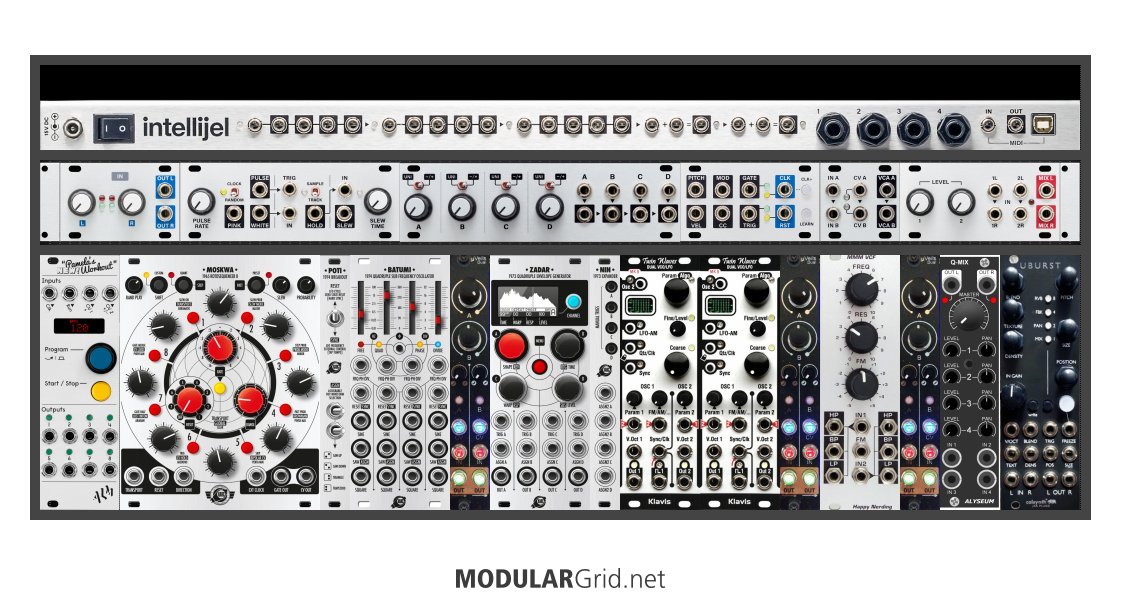Well, right off the bat, the cab's a bit small. Even if you're aiming for a basic-type rig, 62 hp + tiles is really tight, which leads to one of two outcomes:
1) You wind up with a bunch of 2-4 hp modules and then learn how to program a modular synth with a pair of tweezers. Or...
2) You use more or less "normal" modules, but then run out of room for the entire thing.
One thing about trying to build a drum machine in Eurorack, also...it's expensive AF and when compared to present-day drum machine offerings, you won't get your money's worth. Typically, when someone tries this, the costs for JUST the drum machine part can typically run $1-2k; contrast that with most any drum machine on the market presently. And it's not like you can't use a typical drum machine with a modular...the synth should be able to "speak" whatever sync signal is incoming, and if your modular has some way to trigger its sounds from an external source (MIDI, typically), you can still use the modular's sequencer to send triggers...either directly, or over MIDI.
Gonna mess with this for a bit...
[SEVERAL WEEKS LATER]
OK...check THIS out...

So, I tossed the 62 hp cab and shifted up to Intellijel's Palette 104...for obvious reasons! Those smaller cabs are really more for "mission-specific" builds, in the end...say, if I wanted to add a "deeper" modulation core to my gear, that size would be fine. But an entire synth doesn't fit nicely in something like that, as noted above. So...what we got here?
TILES: Stereo input on the left...allows you to input a stereo signal for processing via the modular. Noise Tools is next, providing a master clock (you can use that to drive the Pam's, btw), noise source, sample & hold, and portamento. QuadrATT after that to handle various mixing duties. This would mainly be for jumbling up modulation sources as each pot is an attenuverter, meaning that you can invert the polarity of a signal...so if you want something to go DOWN at the same rate something else goes UP, QuadrATT's your boy. MIDI next...then Intellijel's stereo VCA, which gets followed by their Stereo Mixer. By having a stereo VCA like this, you can have sounds "fly in" against others...for instance, the Clouds clone can be via the VCA, dry out direct. Then patch FX VCA into one pair, dry mix in the other, then let a modulation source "turn up" the VCA so that the Clouds effect gets slightly delayed and fades up, instead of the usual T60 profile of peak-to-zero of a reverb, etc. Lots of twisty things.
ROW: Pam's is back. But THIS time, it's got something to gnaw on: a Xaoc Moskva II sequencer. I really like the circular programming ring for the on/off/skips and CV values, plus this thing is really capable as far as 8-step sequencers go. Full of tricks, in short! Then you've got a quad LFO, Xaoc's Batumi (and it's got its expander), then an After Later dual VCA (topology based on Mutable's Veils VCAs). That and the QuadrATT are your "mod core" for altering and mixing modulation signals to get more...what else?...modulation signals. This is how you can get LOADS of useful signals out of a handful of modulators. After that, Zadar for four channels of envelopes (and it also has its expander).
Then I melt your brain...this has FOUR VCOs. And they've got internal quantization, they do wavetable synthesis, can be internally modulated, and on and on...those Klavis Twin Waves IIs are serious! In this case, I've got things semi-set up so that the VCO 2 in each works best as an FM modulator for VCO 1, with VCO 1 being the "voice" oscillator. Two more VCAs, then a dual SVF from Happy Nerding...or is it one really complicated VCF? Well...it's potentially BOTH. And after that, yep, VCAs...remember, you can NEVER have too many of these. They make these things GO, pretty much. After the VCAs, then the Alyseum Q-mix gives you four pannable input channels and your audio chain master. The last thing there is the aforementioned Clouds clone; yeah, it's a clone, but the knob layout here isn't as bad as others'. And having a granular module to mess with your audio is a real "must" these days, so this can either...
1) be used as a "passthru" from the Q-mix to the Stereo Mixer tile, controlling the wet/dry balance on the Clouds clone, or
2) be used as a separate effect by using the mults in the "toolbar" to split out "dry" audio (and send the output to one stereo input pair) and "processing" audio (which gets sent to the other stereo input, either straight or via the Stereo VCA).
Both work really well. Note also that I put the "toolbar" on this so you can keep in mind that you've got the various buffered mults, adders, jacks and all that in the build. Useful thing, that.
So, yeah...this has a lot more going on in terms of both modules AND sonic capabilities. This should keep you busy for a hot minute or three. Plus, it's a good illustration of the difference that you can get with a basic case resize.
